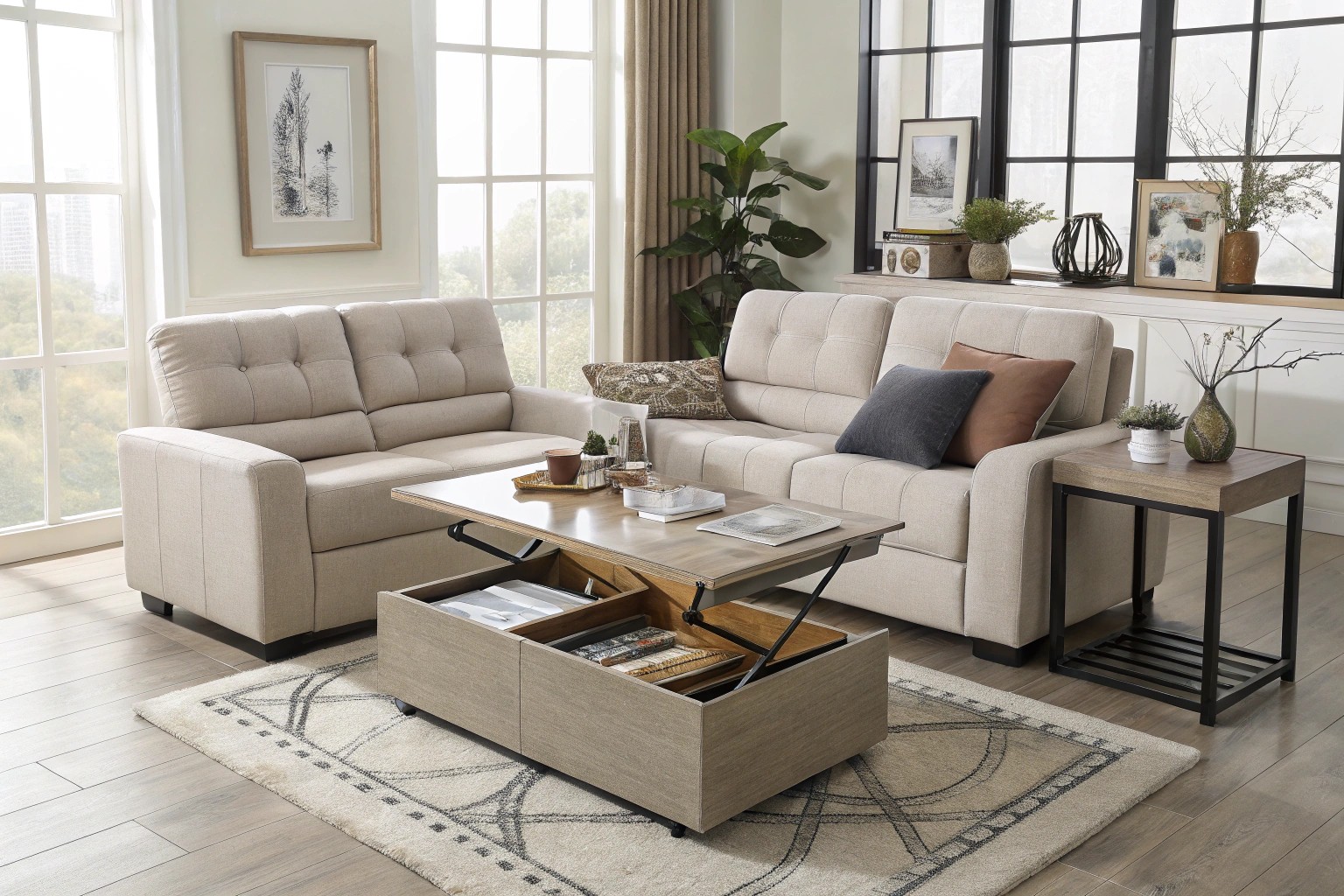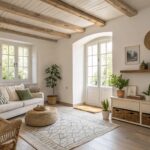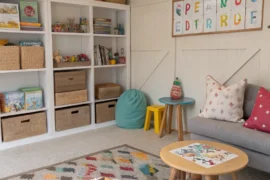In today’s ever-evolving world, our living spaces must keep pace with our changing lives. Adaptive furniture—pieces designed to transform, adjust, and evolve alongside us—offers an elegant solution to this perpetual challenge. As someone who has designed hundreds of living spaces over two decades, I’ve witnessed firsthand how the right adaptive pieces can revolutionize a home’s functionality while preserving its aesthetic integrity for years to come.
Understanding Adaptive Furniture

Adaptive furniture encompasses pieces specifically designed to change their form, function, or features to accommodate evolving needs. Unlike standard furniture that serves a single purpose, adaptive pieces transform to serve multiple functions or adjust to different physical requirements.
What Makes Furniture Truly Adaptive?
Several key characteristics distinguish truly adaptive furniture from conventional pieces:
- Adjustable Components: Height-adjustable tables, extendable surfaces, or movable parts
- Transformative Abilities: Pieces that convert from one function to another
- Modular Design: Components that can be rearranged or reconfigured
- Ergonomic Considerations: Designs that accommodate changing physical needs
- Durability: Construction that withstands repeated adjustments and transformations
I remember working with a young couple in their first apartment who invested in a modular sofa system rather than a standard sectional. Seven years later, that same system still serves them perfectly—now reconfigured to accommodate two children in a suburban home. The initial investment was higher, but the long-term value proved extraordinary.
Types of Adaptive Furniture for Different Life Stages
Different life stages demand different adaptations. Here’s how furniture can evolve with you:
For Growing Families
| Furniture Type | Adaptive Features | Best Applications |
|---|---|---|
| Extendable dining tables | Leaves that add length/width | Family meals, entertaining |
| Convertible cribs | Transform from crib to toddler bed to full bed | Children’s rooms, 0-12 years |
| Modular storage systems | Adjustable shelving, expandable components | Playrooms, bedrooms, living areas |
| Nesting tables | Multiple surfaces that store compactly | Living rooms, family rooms |
| Height-adjustable desks | Grow with children from elementary to high school | Study areas, homework stations |
For Aging in Place
When designing for clients planning to age in their homes, we prioritize furniture that maintains independence and dignity. Key adaptive features include:
- Lift chairs that assist with standing and sitting
- Adjustable beds with customizable positions for comfort and accessibility
- Accessible desks with height adjustability for changing needs
- Adaptive dining furniture with supportive features and adjustable heights
- Ergonomic seating with proper lumbar support and ease of entry/exit
One client shared how invaluable her adjustable bed frame has been over the years: “I invested in a quality adjustable bed frame five years ago,” she told me, “and it’s been invaluable through my recovery from hip surgery, pregnancy, and now when my grandchildren visit and we read bedtime stories.”
The Science Behind Adaptive Design
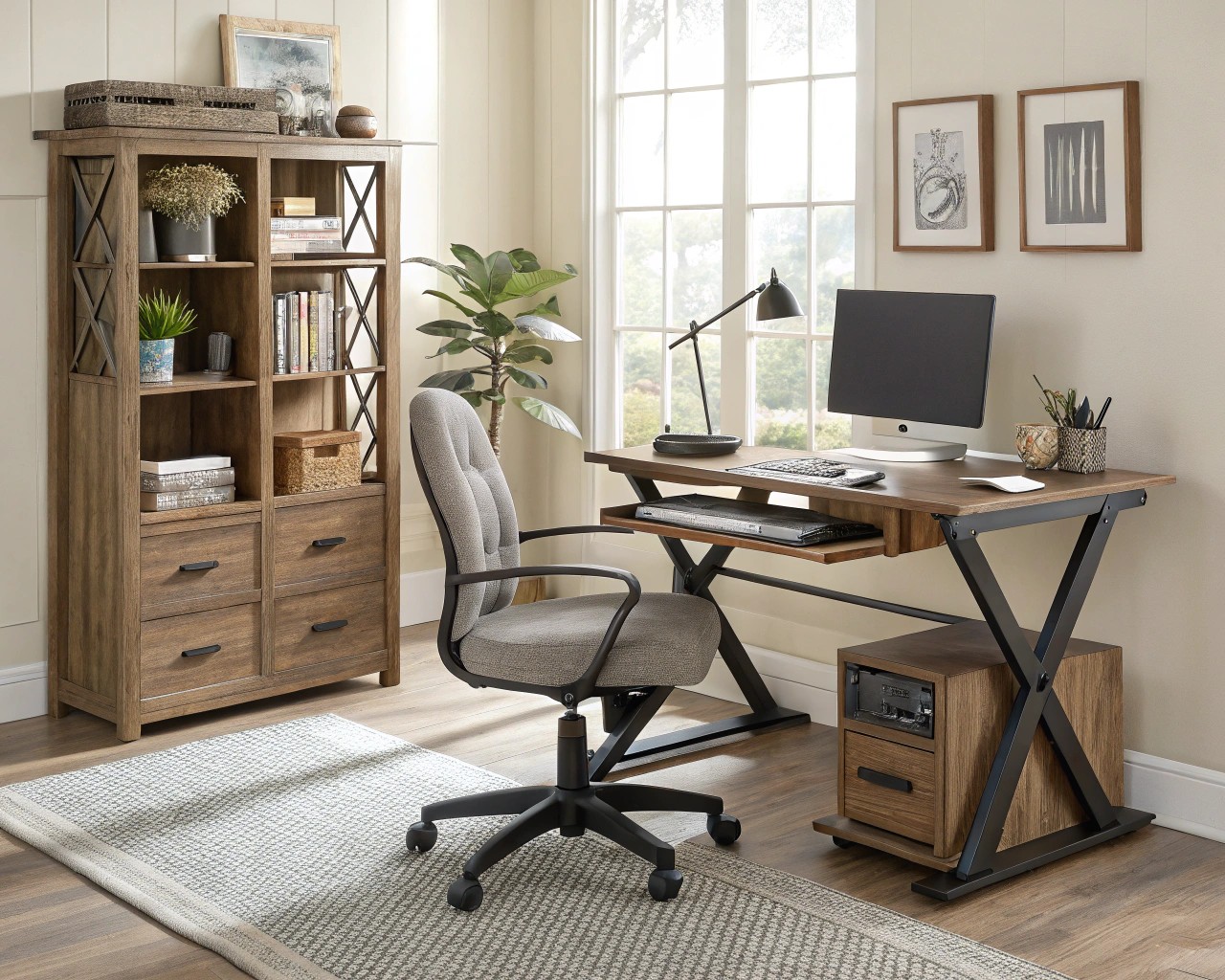
Adaptive furniture doesn’t just offer convenience—it addresses fundamental human needs. Ergonomically designed pieces reduce physical strain and support proper body alignment. For instance, adjustable desks significantly reduce the risks associated with prolonged sitting, while properly designed ergonomic chairs can alleviate back pain and improve posture.
When selecting adaptive furniture, consider:
- Range of adjustment (does it accommodate all potential users?)
- Ease of operation (can adjustments be made without assistance?)
- Stability at all positions (does the piece remain secure when adjusted?)
- Quality of mechanisms (will adjustable components withstand regular use?)
- Material durability (will finishes and materials show wear at adjustment points?)
Transformative Furniture for Small Spaces

In urban environments where space comes at a premium, transformative furniture becomes essential rather than optional. You’d be surprised how effectively these pieces can maximize functionality in limited square footage:
- Wall beds (Murphy beds) that convert from sleeping space to open floor area
- Coffee-to-dining tables that adjust in height and sometimes width
- Console-to-dining tables that expand from narrow hallway pieces to full dining surfaces
- Modular seating that reconfigures for different gathering sizes
- Nesting furniture that stores compactly when not in use
We recently designed a 450-square-foot studio apartment in Seattle that functions as a one-bedroom through strategic use of transforming furniture. The client confirms the effectiveness, reporting that her space “lives like an apartment twice its size” because every piece serves multiple functions.
Case Study: Adaptive Solutions for Aging in Place
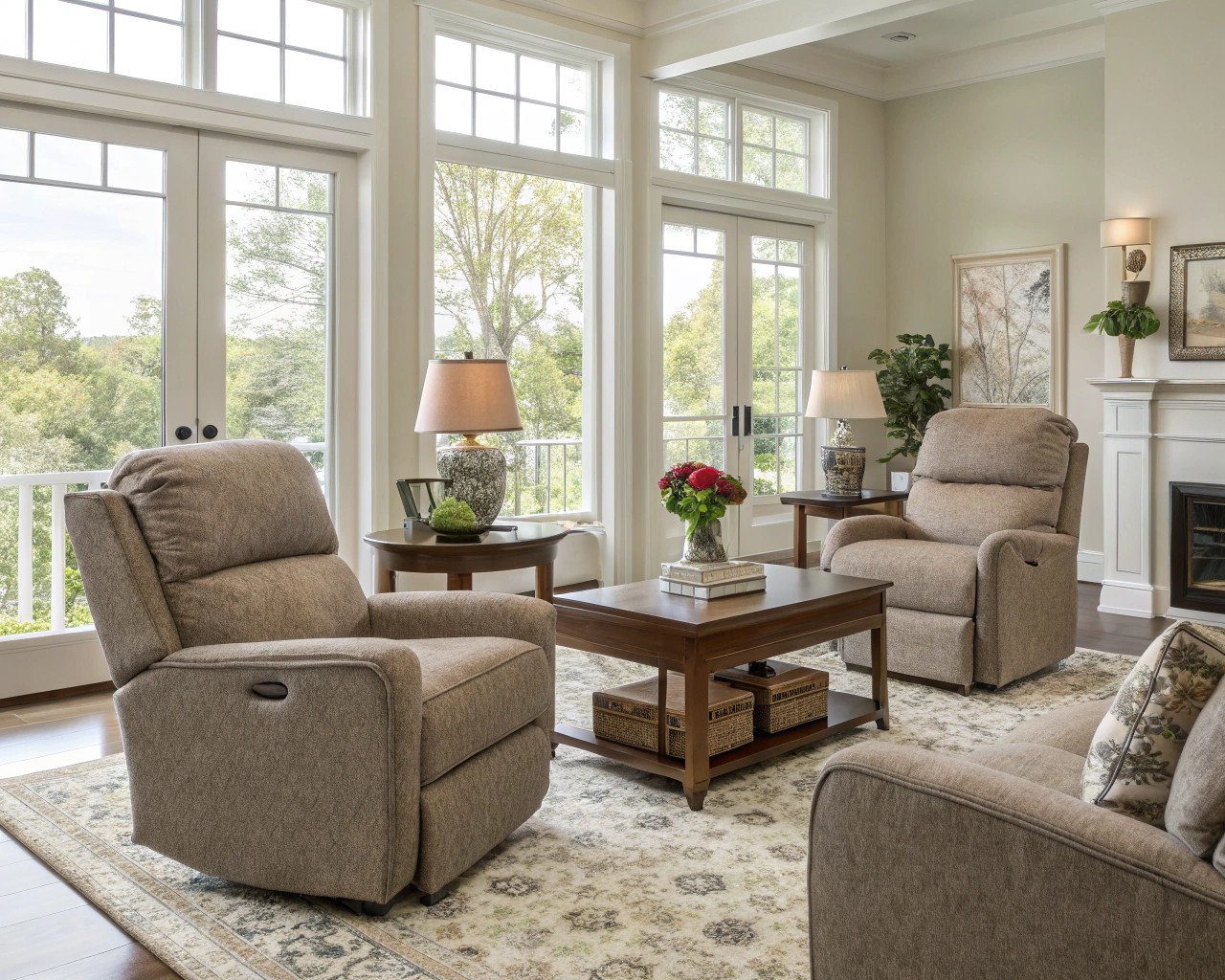
Mrs. Chen, a 72-year-old widow, wanted to remain in her two-story colonial home despite mobility challenges. Rather than relocating, we implemented adaptive furniture solutions that transformed her space:
- Replaced standard dining chairs with supportive armchairs on casters
- Installed a lift chair in the primary sitting area
- Integrated an adjustable bed with easy-access height
- Modified her office with an adjustable-height desk
- Added accessible storage solutions with pull-down mechanisms
Six months later, Mrs. Chen reflected on the success of the project. “The changes we made were visually subtle but functionally transformative,” she reported. “I never feel limited by my space now, and everything adjusts to how I’m feeling on a particular day.”
Disability-Inclusive Adaptive Furniture
Adaptive furniture plays a crucial role in creating accessible environments for individuals with different abilities. When designing these spaces, I emphasize these principles:
- Universal design that works for people of all abilities
- Customizable components that adapt to specific needs
- Intuitive adjustments that don’t require significant strength
- Aesthetic integration so accessible features don’t appear institutional
- Multisensory considerations for individuals with various processing needs
A historical perspective shows that disability-inclusive furniture design has evolved significantly since the early 20th century. Today’s adaptive furniture emphasizes both function and aesthetics, ensuring that accessibility doesn’t come at the cost of style or dignity.
Sustainability Through Adaptability
One aspect of adaptive furniture that particularly excites me is its inherent sustainability. When furniture can transform to meet changing needs, it dramatically reduces the consumption cycle of purchasing and discarding pieces as circumstances change.
Sustainable aspects of adaptive furniture include:
- Longevity of use across different life stages
- Reduced resource consumption through fewer replacement purchases
- Material efficiency as one piece serves multiple functions
- Potential for repair of specific components rather than whole-piece replacement
- Adaptability to different living spaces when relocating
Manufacturers often emphasize the contrast between their durable, long-lasting adaptive products and the disposable nature of mass-produced “fast furniture.” They point out that using high-quality, sustainable materials for transforming furniture promotes a more efficient use of both space and resources.
Design Tips for Integrating Adaptive Furniture
When introducing adaptive furniture into your space, consider these designer-approved strategies:
- Start with the most-used spaces where adaptability will have the greatest impact
- Look for dual-purpose pieces that solve multiple functional challenges
- Consider clearance spaces needed for transformations or adjustments
- Balance mechanism complexity with your patience for daily adjustments
- Invest in quality hardware as mechanical components are often the first to fail
- Test adjustments before purchasing to ensure they work for your specific needs
- Prioritize user-friendly adjustments that can be managed independently
I recommend clients allocate approximately 30% of their furniture budget toward high-quality adaptive pieces in primary living areas. The investment typically pays dividends through years of additional functionality.
The Psychology of Adaptable Spaces
There’s something profoundly satisfying about spaces that adapt to our needs rather than forcing us to adapt to them. Studies suggest that environments responsive to our changing requirements can reduce stress and increase feelings of control and well-being.
When working with clients who have experienced significant life changes—such as divorce, empty-nesting, or retirement—I find that adaptive furniture often provides both practical solutions and psychological comfort during transition periods.
Emerging Trends in Adaptive Furniture
The adaptive furniture market continues to evolve with exciting innovations:
- Smart adaptive furniture with programmable settings and automated adjustments
- Bioresponsive materials that adapt to body temperature and pressure
- Kinetic furniture that moves in response to environmental factors
- 3D-printed customization for personalized adaptive components
- Integrated technology that combines digital interfaces with physical adjustability
These innovations point toward a future where furniture responds not just to our manual adjustments but anticipates our needs based on patterns, preferences, and physiological signals.
How to Evaluate Quality in Adaptive Furniture
When investing in adaptive pieces, quality assessment becomes particularly important due to moving parts and transformation mechanisms. I advise clients to examine:
- Weight capacity at all positions (does strength diminish when extended?)
- Smoothness of operation (do adjustments require excessive force?)
- Hardware quality (are hinges, slides, and connectors made to last?)
- Material thickness at stress points (are areas subject to wear reinforced?)
- Warranty coverage specifically for mechanisms (are transformative aspects covered?)
- Availability of replacement parts (can individual components be repaired?)
The most reliable predictor of quality in adaptive furniture is often the mechanism itself—test it repeatedly before purchasing and look for smooth, sturdy operation.
Creating an Adaptive Home: Room by Room
Adaptive Living Room
The living room often serves the most diverse functions in a home. Key adaptive pieces include:
- Modular seating systems that reconfigure for different activities
- Nesting or expanding tables for variable surface needs
- Storage ottomans that serve as seating, tables, and storage
- Height-adjustable side tables for different seating arrangements
- Media furniture that conceals or reveals technology as needed
Adaptive Dining Spaces
Many of my clients are surprised by how dramatically an adaptive dining space can increase a home’s functionality:
- Extendable tables that accommodate different gathering sizes
- Stackable or nesting dining chairs for variable seating needs
- Convertible console/dining tables for dual-purpose spaces
- Adjustable-height dining surfaces for accessibility
- Mobile serving pieces that relocate for different functions
Adaptive Bedrooms
In the bedroom, adaptive furniture can transform both comfort and storage capacity:
- Adjustable bed frames for changing comfort and health needs
- Storage beds with variable access options
- Wardrobes with adjustable internal components
- Nightstands with adaptable heights and features
- Seating that converts for different bedroom activities

